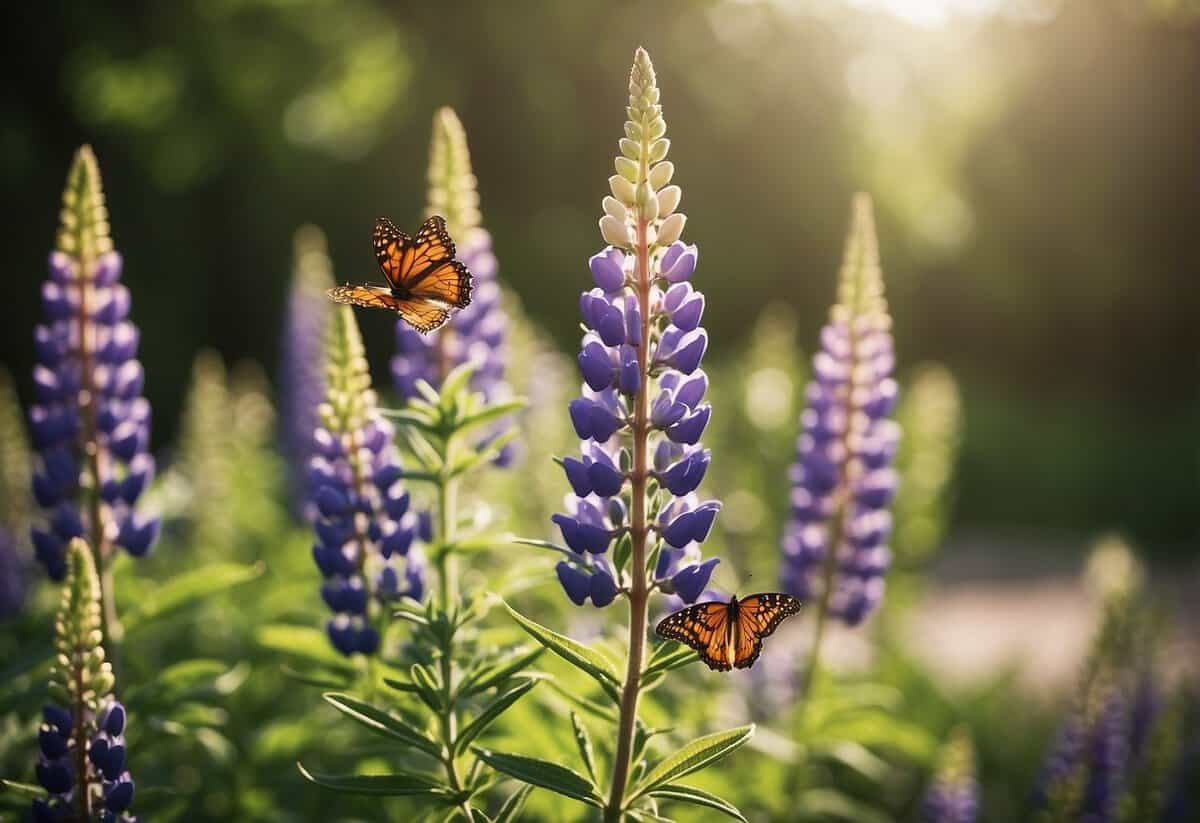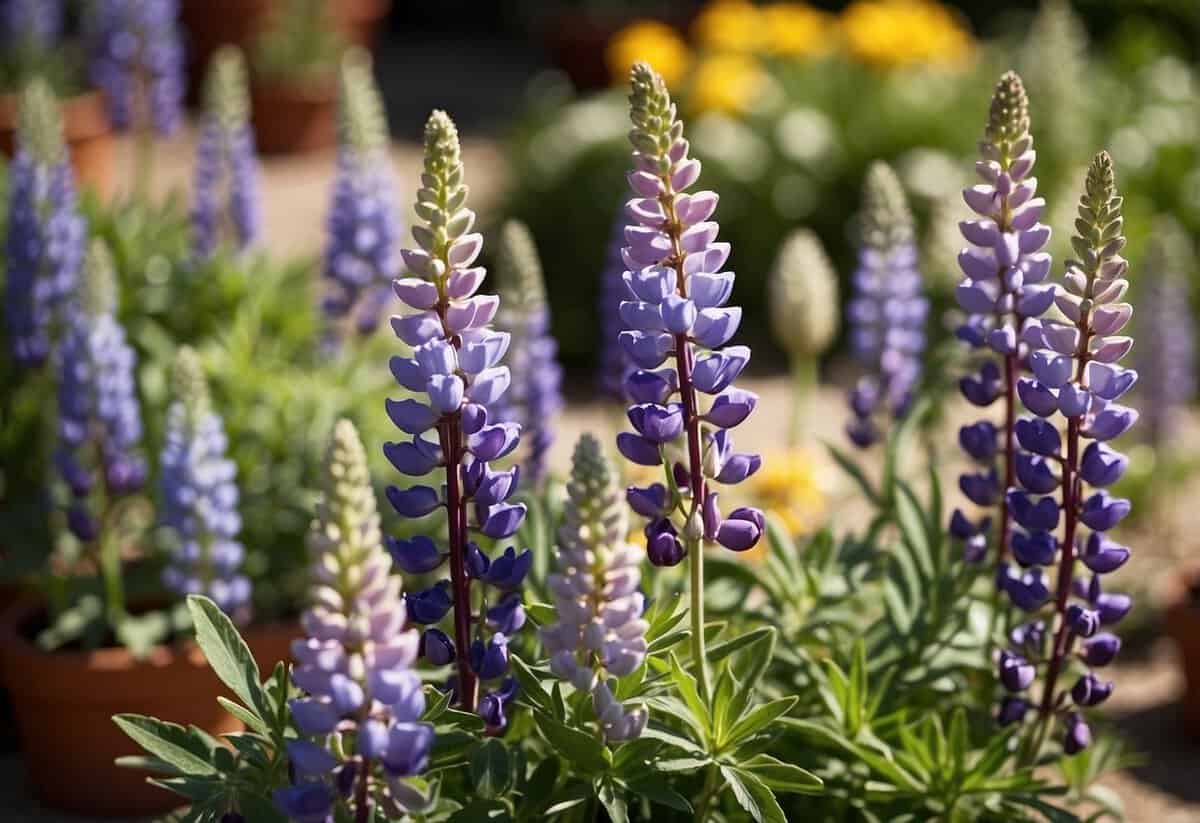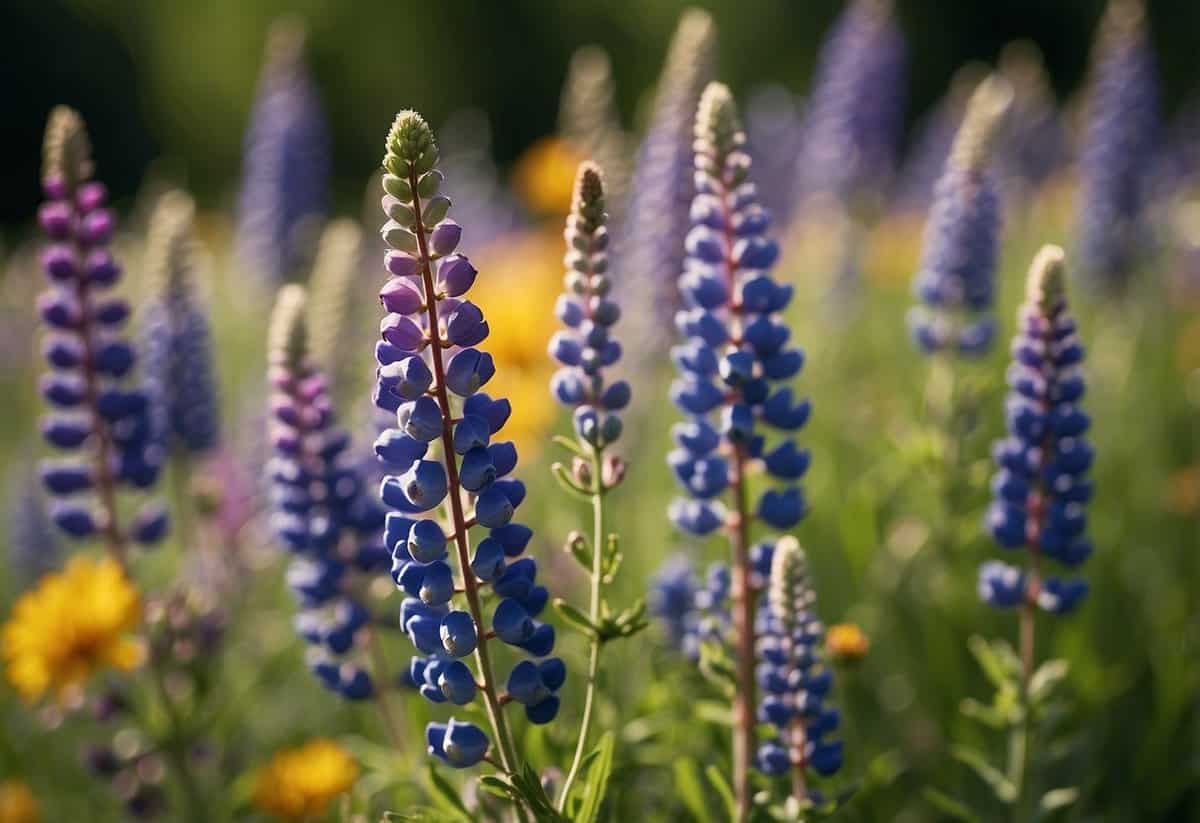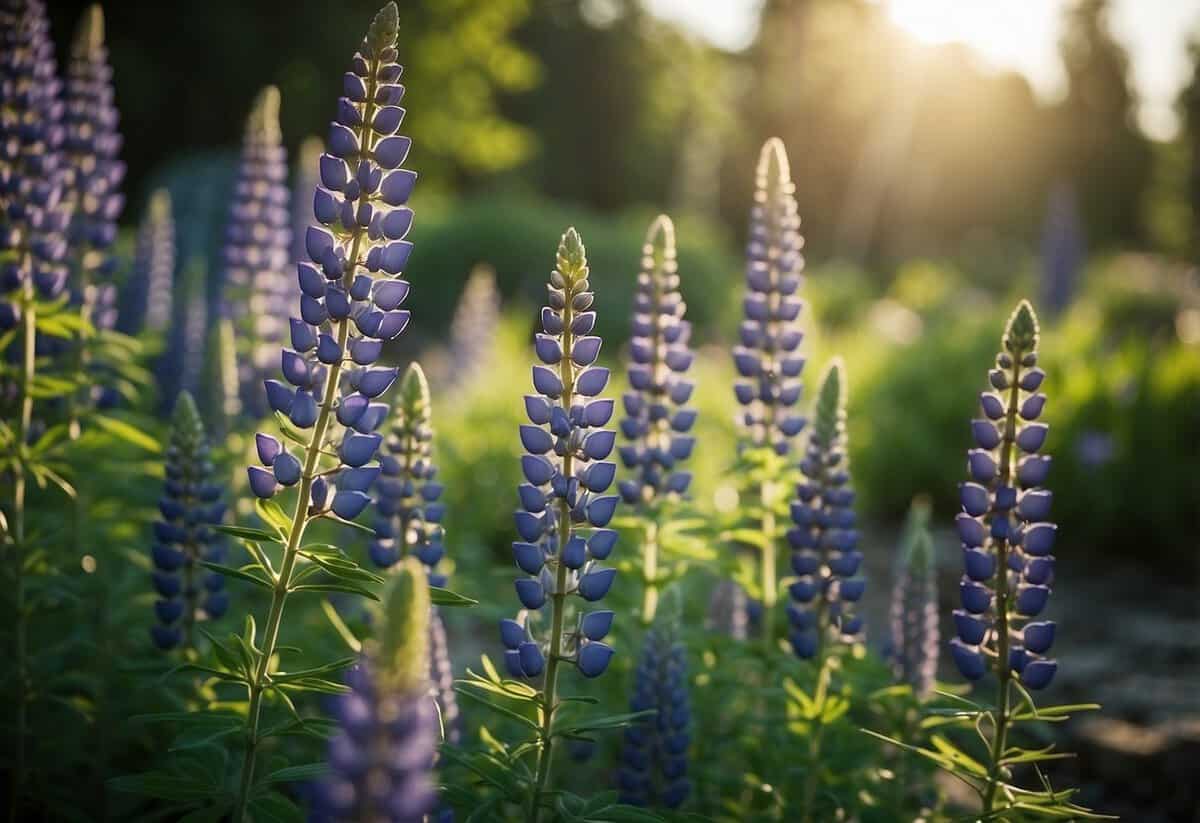Lupine Garden Ideas: Creative Ways to Brighten Your Yard
Looking to add a splash of vibrant color to your garden? Consider planting lupines. These beautiful flowers come in a variety of colors and can transform any outdoor space into a stunning display.

Wondering how to incorporate lupines into your garden? Whether you have a large backyard or a cozy patio, lupines can fit right in. From creating eye-catching borders to enhancing container gardens, the possibilities are endless.
1) Flower Bed Designs

Adding lupines to your flower bed can make it look lively. Their tall, colorful spikes create a striking focal point.
Pair lupines with other plants like foxgloves and delphiniums. These plants enjoy similar conditions and will thrive together in your garden.
Consider using heirloom plants and flowers for a timeless touch.
Adding a mix of colors and shapes can enhance the visual appeal, making your garden feel cheerful and inviting.
2) Potted Lupines on Patios

Potted lupines can make your patio look vibrant and colorful. They thrive in full sunlight, so make sure your patio gets at least 6 to 8 hours of direct sun each day.
Use a large and wide pot to give the roots plenty of space. Well-draining soil helps lupines stay healthy.
Water your potted lupines every 3 to 4 days using rainwater if possible. Regular moisture keeps them happy, especially in hot climates.
You can find more tips on growing lupines in pots at Plant Addicts.
3) Colorful Lupine Borders

Lupines add vibrant color and vertical interest to your garden. You can use them to create striking borders that will catch anyone’s eye.
Try mixing shades like hot pink, purple, yellow, and white for a rainbow effect. Check out more on these lupine colors.
Plant them alongside other perennials like mullein and avens for added texture and contrast. This combination can create a lively garden scene. Learn more about this idea here.
4) Mixed Wildflower Meadows

You can create a stunning and diverse garden by mixing lupines with other wildflowers. Lupines pair beautifully with California Poppy, Indian Paintbrush, and Daisies.
Include a mix of wild grasses to add texture and natural appeal. This combination attracts pollinators like butterflies, bees, and hummingbirds.
For more inspiration, check out wildflower garden ideas that bring together various colors and blooms.
5) Lupine Shady Area Adaptations

Lupines prefer full sun but can tolerate partial shade. In shady spots, they may not bloom as brightly but will still grow well.
Make sure the soil is well-drained and slightly acidic to neutral. This helps them thrive even with less sunlight.
Water regularly but avoid overwatering, which can cause root rot in shady areas. With the right care, your lupines can be a lovely addition to your garden.
6) Lupines and Companion Plants

Pairing lupines with the right companion plants can make your garden thrive. Plants like daisies, coneflowers, and asters grow well with lupines. They add a burst of color and attract pollinators.
Avoid planting brassicas like cabbage and broccoli near lupines. Brassicas need different soil and can compete for nutrients. Try yarrow or lavender instead for a perfect match in your garden. Find out more about good companion plants for lupines.
7) Repurposing Garden Items for Lupines

You can reuse everyday items to make your lupine garden more charming. Old wooden mail organizers can hold small garden tools and keep them handy.
Consider using a vintage ladder as a flower stand. Place pots of lupines on each step for a vibrant display.
Another idea is to turn an unused wheelbarrow into a movable lupine planter.
8) Efficient Lupine Watering Systems

Watering lupines efficiently is key to their growth. Drip irrigation is highly effective. It delivers water straight to the roots and minimizes evaporation. This makes sure your lupines get the moisture they need without waste.
Soaker hoses are another great option. They saturate the soil slowly, allowing water to deeply penetrate the root zone. This helps lupines stay healthy and thrive.
Newly planted lupines require consistent watering. As they mature, they will tolerate some drought conditions, but regular watering supports robust blooms and growth.
9) Soil Preparation for Lupines

Start by choosing well-draining soil. Lupines prefer soil that doesn’t retain too much water. Amending the soil with organic matter can help enhance drainage and boost nutrient levels.
Make sure the soil is slightly acidic to neutral. If your soil is too alkaline, you may need to amend it with sulfur to adjust the pH balance.
Space the lupines about 2-3 feet apart to give them room to grow. This prevents competition for nutrients and allows for better air circulation.
For best results, sow lupine seeds about ⅛ inch deep and water gently. Proper soil preparation can lead to thriving lupines in your garden.
10) Lupine Garden Maintenance Tips

Water your lupines regularly, but make sure the soil drains well to prevent root rot. They thrive in slightly acidic to neutral pH levels.
Remove dead flowers to encourage more blooms and keep the plants looking tidy. This process is called deadheading.
Apply a balanced fertilizer during the growing season to promote healthy growth. Avoid high-nitrogen fertilizers, as they can cause excessive foliage growth at the expense of flowers.
Watch for pests like aphids and slugs. Regularly inspect your plants and remove these pests by hand or use organic insecticides.
Consider adding mulch around the base of your lupines. This helps retain moisture and suppress weeds.
Benefits of Growing Lupines

Growing lupines in your garden offers several advantages. These plants not only beautify your space with their vibrant colors but also provide real benefits such as attracting beneficial pollinators and improving soil fertility.
Attracting Pollinators
Lupines are excellent for attracting pollinators like bees, butterflies, and hummingbirds. The tall racemes of flowers in colors like yellow, blue, and white are particularly appealing to these beneficial insects. This is essential for the health of your garden, as many plants rely on pollinators for fruit and seed production.
By planting lupines, you create an environment that supports biodiversity. This can make your garden more vibrant and fruitful. Moreover, many pollinators are facing habitat loss, so by growing lupines, you are also contributing to the conservation of these important species.
Enhancing Soil Fertility
Lupines can improve soil fertility through their relationship with nitrogen-fixing bacteria. They have a long tap root that helps bring up nutrients from deeper soil layers, making them available to other plants. This is especially beneficial if your garden has poor or sandy soil.
The plant’s ability to fix nitrogen means it can reduce the need for chemical fertilizers. As the lupines decompose, they add organic matter to the soil, further enhancing its quality. This creates a healthier environment for future plantings and can lead to more robust and healthy garden plants overall.
These benefits underline why lupines are a great choice for any garden. Their attractive flowers and practical advantages make them a valuable addition to your gardening efforts.
Ideal Conditions for Lupine Gardens

To grow healthy lupines, focus on the right type of soil, proper sunlight, and consistent watering practices.
Soil Requirements
Lupines thrive in well-drained soil with a slightly acidic to neutral pH. Use soil that’s low to moderate in fertility.
Avoid highly fertile soil, which can lead to leggy plants without many flowers. If your soil tends to be alkaline, especially in southern regions, amend it with sulfur to achieve the right balance.
Loose, sandy soil works well, as lupines have a long tap root that digs deep to get nutrients. Ensure the soil stays aerated to help the roots grow strong and healthy.
Sunlight Needs
Lupines are sun-loving plants that need at least 6 hours of sunlight daily. While they can handle partial shade, full sun is ideal for robust growth and vibrant blooms.
When planting, choose a location that gets plenty of direct sunlight. Shade can work, but the blooms may not be as impressive.
Also, make sure the spot is sheltered from strong winds, which can damage the tall flower spikes. This way, your lupines will have the best chance to thrive.
Watering Tips
Watering is vital for lupines but don’t overdo it. Keep the soil consistently moist but not waterlogged.
In the growing season, water deeply once a week, more often if it’s particularly hot or dry. Install a mulch layer around the plants to help retain moisture and keep the soil temperature even.
Avoid overhead watering to reduce the risk of fungal diseases. Instead, use a soaker hose or drip irrigation.
By managing your watering routine properly, you’ll ensure that your lupines get exactly what they need to flourish without standing in water which can damage their roots.







